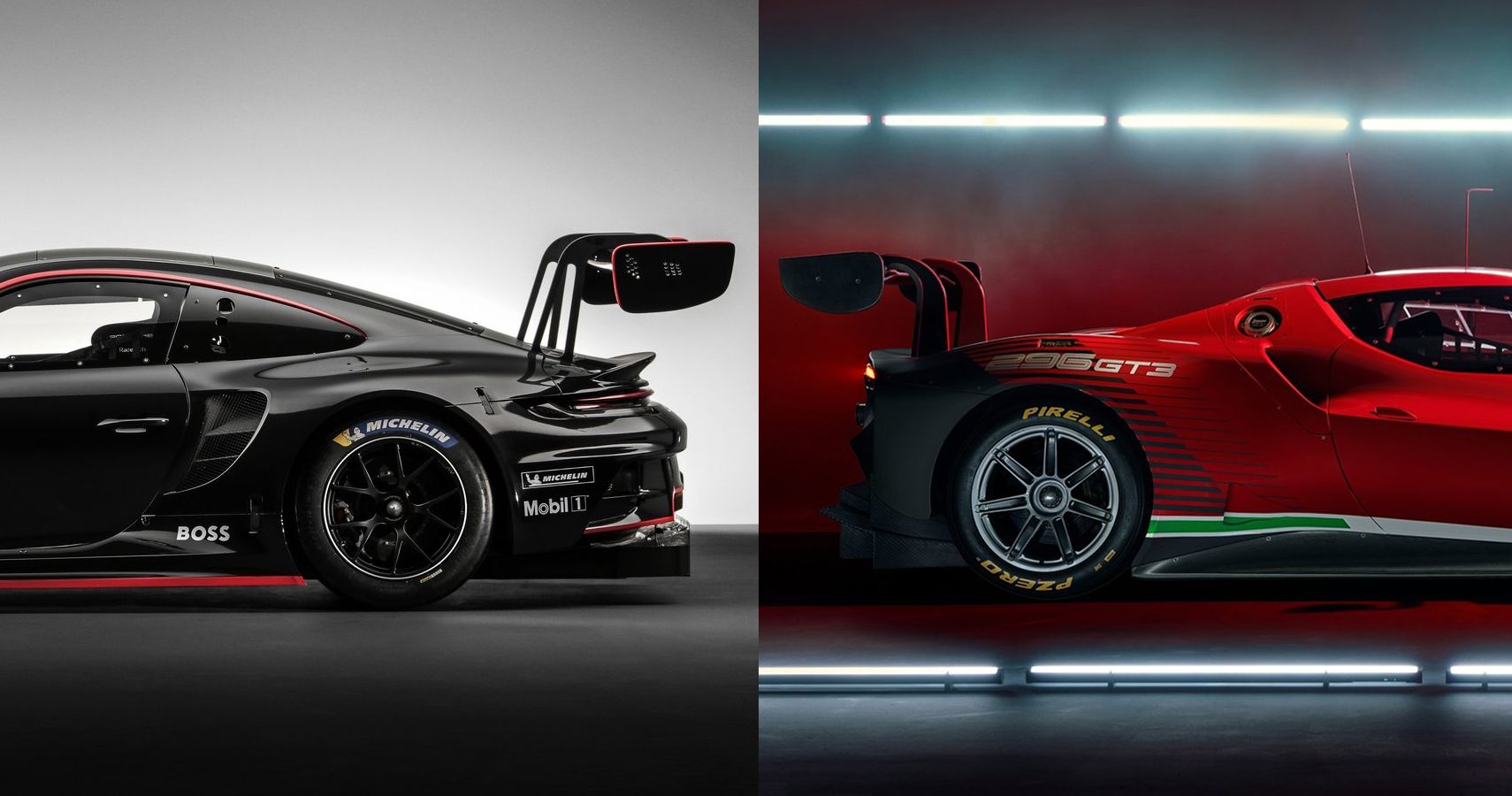The world of motorsports allows carmakers to show their worth. Motorsports don’t just prompt them to build quick and fast cars, but also deliver on the wants and needs of specific customers. Carmakers even race to test new technologies and transfer them to their future road cars. Thus, motorsports has always been an ideal venue for carmakers.
One of the various arenas in the world of motorsports where carmakers have been competing is the Group GT3, or simply known as GT3. Serving as the de facto category for several national and international GT series, GT3 feature racers that carmakers based on production road cars.
The latest of these GT3 race cars are from two of the most prolific makers of sports cars and supercars –Ferrari and Porsche. Both carmakers recently introduced the Ferrari 296 GT3 and the Porsche 911 GT3 R.
While both GT3 challengers promise to deliver the goods as a winning customer racing car, they have large shoes to fill, as their respective predecessors were laden with success. Nevertheless, while the Ferrari 296 GT3 and the Porsche 911 GT3 R are quite different in many ways, it’s hard to resist comparing these ultimate track machines.
Powertrain: Engine and Gearbox
Starting off with the Ferrari 296 GT3, this new track racer features a six-cylinder 3.0-liter engine with a 120-degree V configuration with equally spaced firings. This engine borrows from the mill in the Ferrari 296 GTB, sans the electric elements. It is more compact and lighter than its road-going twin, thanks to elimination of various.
Nevertheless, the mill under the hood of the Ferrari 296 GT3 remains powerful, although ruling bodies usually limit performance to a certain degree. Ferrari's engineers have tuned this engine to deliver around 600 hp of max output at 7,250 rpm and 523 lb-ft of peak torque available at 5,500 rpm. The engine sends power to the wheels via a new and specially developed transversal sequential gearbox, a six-gear unit featuring rotary e-shift actuator gearshift with paddles on the steering wheel.
On the other hand, the engine of the Porsche 911 GT3 R is a water-cooled flat-six unit with four-valve technology and direct fuel injection – just like the base 4.0-liter engine. However, its displacement is higher at 4.2 liters, allowing for an increase in max output to 557 hp, with optimized torque and power curve across the entire rev range.
Porsche’s boxer engine sends power to the wheel via a six-speed sequential constant-mesh gearbox, featuring shift paddles on the steering wheel with electronic shift actuator.
Vehicle Dynamics And Chassis
Ferrari opted to make the chassis of the 296 GT3 as light as possible by crafting it from aluminum. This allows the 296 GT3 also to offer better and more efficient ballast management, with safety ensured through careful design, sophisticated simulations and innovative technologies.
The Ferrari 296 GT3 features a longer wheelbase than the 296 GTB, and a different suspension design to the 488 GT3. It employs double wishbone arms in the front and rear suspensions, which Ferrari designed to offer a wide range of settings for the best possible setup. The carmaker revised and upgraded the braking system with newly designed calipers and discs, and tapped Rotiform for all-new forged wheels.
Meanwhile, the Porsche 911 GT3 R want to dominate the track by making various revisions on its suspension design – with the aim of supporting drivability and allowing more precise steering. Thus, its front suspension employs a double wishbone layout, while the rear features a multi-link design. Its improved KW shock absorbers now offer five adjustment settings.
Porsche moved the rear wheels further back, thereby extending the wheelbase of the 911 GT3 R from 2,459 mm to 2,507 mm. This results in lesser load on the rear tires while improving the consistency of the rubbers’ performance over longer races. Braking power comes in the form of aluminum monobloc racing brake calipers and AP brake discs, with help from a Generation 5 racing ABS from Bosch.
Exterior, Interior And Aerodynamics
Featuring a carbon fiber body with an aluminum roof, the Ferrari 296 GT3 sans aerodynamic devices looks very similar to the 296 GTB. Nevertheless, Ferrari’s works on the 296 GT3 entailed achieving maximized grip and handling while ensuring the car still delivers optimized aerodynamic performance suitable for the track. Aero elements include a front splitter, multiple front wings vents, dive planes, rear extractor, a rear diffuser, and a massive "swan-neck" rear wing.
In response to input from factory drivers and customers, Ferrari redesigned the cockpit of the 296 GT3. Still offering high levels of safety, the cockpit now features adjustable pedals and steering. It is now easier to access from the outside and with main functions within easy reach. Its Formula 1 car-inspired steering wheel now carries various controls and functions.
On the other hand, the Porsche 911 GT3 R comes with a lightweight body featuring intelligent aluminum-steel composite design. Its design centers on functionality, although its shape remains stunning. Aero elements include a widened front bumper with spoiler lip, fenders with extensions carbon-fiber rear lid and rear wing, and a rear wing with “swan neck” mounts.
Safety features include a welded-in roll cage, removable rescue hatch in the roof, six-bolt carbon racing seat, and six-point safety harness. It comes with adjustable pedal assembly and steering column, and a central air intake for cockpit ventilation. Featuring a carbon-fiber interior trim, the 911 GT3 R comes with a multifunctional carbon-fiber steering wheel, and an ergonomic digital touch panel with multicolor backlighting.
Source: Ferrari, Porsche


